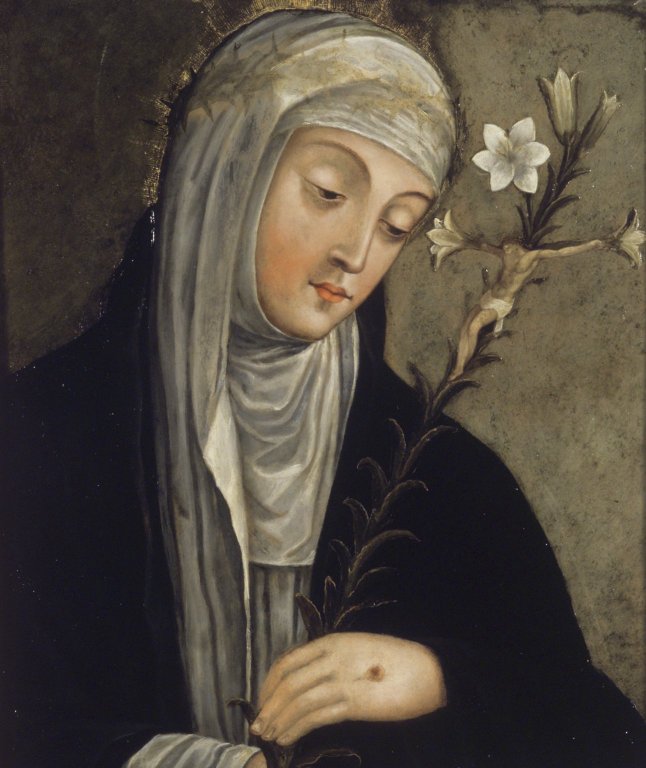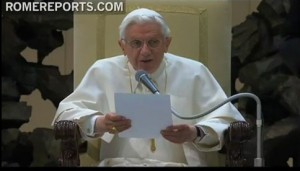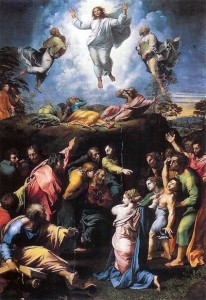 I’ve heard it said that every Orthodox Christian home is encouraged to have an image of the Transfiguration. It’s such a powerful moment.
I’ve heard it said that every Orthodox Christian home is encouraged to have an image of the Transfiguration. It’s such a powerful moment.
The video below is from Sufjan Stevens. His song, called “The Transfiguration”, is put to famous works of art. Sufjan is very different in his styling. I find him very intriguing. You’ll find it different then the big Verdi-like orchestral “sacred” setting you may be expecting on this day. This piece of Sufjan’s music makes me stretch. And in some ways, wasn’t that the purpose of the day anyway? Expect the unexpected…
Spirituality
St. Catherine of Siena, one of the great heroines of Christianity
Dominican Tertiary, born at Siena, 25 March, 1347; died at Rome, 29 April, 1380.
From the Catholic Encyclopedia, found at New Advent –
She was the youngest one of a very large family. Her father, Giacomo di Benincasa, was a dyer; her mother, Lapa, the daughter of a local poet. They belonged to the lower middle-class faction of tradesmen and petty notaries, known as “the Party of the Twelve”, which between one revolution and another ruled the Republic of Siena from 1355 to 1368. From her earliest childhood Catherine began to see visions and to practise extreme austerities. At the age of seven she consecrated her virginity to Christ; in her sixteenth year she took the habit of the Dominican Tertiaries, and renewed the life of the anchorites of the desert in a little room in her father’s house. After three years of celestial visitations and familiar conversation with Christ, she underwent the mystical experience known as the “spiritual espousals”, probably during the carnival of 1366. She now rejoined her family, began to tend the sick, especially those afflicted with the most repulsive diseases, to serve the poor, and to labour for the conversion of sinners.Though always suffering terrible physical pain, living for long intervals on practically no food save the Blessed Sacrament, she was ever radiantly happy and full of practical wisdom no less than the highest spiritual insight. All her contemporaries bear witness to her extraordinary personal charm, which prevailed over the continual persecution to which she was subjected even by the friars of her own order and by her sisters in religion.
She began to gather disciples round her, both men and women, who formed a wonderful spiritual fellowship, united to her by the bonds of mystical love. During the summer of 1370 she received a series of special manifestations of Divine mysteries, which culminated in a prolonged trance, a kind of mystical death, in which she had a vision of Hell, Purgatory, and Heaven, and heard a Divine command to leave her cell and enter the public life of the world. She began to dispatch letters to men and women in every condition of life, entered into correspondence with the princes and republics of Italy, was consulted by the papal legates about the affairs of the Church, and set herself to heal the wounds of her native land by staying the fury of civil war and the ravages of faction. She implored the pope, Gregory XI, to leave Avignon, to reform the clergy and the administration of the Papal States, and ardently threw herself into his design for a crusade, in the hopes of uniting the powers of Christendom against the infidels, and restoring peace to Italy by delivering her from the wandering companies of mercenary soldiers. While at Pisa, on the fourth Sunday of Lent, 1375, she received the Stigmata, although, at her special prayer, the marks did not appear outwardly in her body while she lived.
Mainly through the misgovernment of the papal officials, war broke out between Florence and the Holy See, andalmost the whole of the Papal States rose in insurrection. Catherine had already been sent on a mission from the pope to secure the neutrality of Pisa and Lucca.
In June, 1376, she went to Avignon as ambassador of the Florentines, to make their peace; but, either through the bad faith of the republic or through a misunderstanding caused by the frequent changes in its government, she was unsuccessful. Nevertheless she made such a profound impression upon the mind of the pope, that, in spite of the opposition of the French king and almost the whole of the Sacred College, he returned to Rome (17 January, 1377).
Catherine spent the greater part of 1377 in effecting a wonderful spiritual revival in the country districts subject to the Republic of Siena, and it was at this time that she miraculously learned to write, though she still seems to have chiefly relied upon her secretaries for her correspondence. Early in 1378 she was sent by Pope Gregory to Florence, to make a fresh effort for peace. Unfortunately, through the factious conduct of her Florentine associates, she became involved in the internal politics of the city, and during a popular tumult (22 June) an attempt was made upon her life. She was bitterly disappointed at her escape, declaring that her sins had deprived her of the red rose of martyrdom. Nevertheless, during the disastrous revolution known as “the tumult of the Ciompi”, she still remained at Florence or in its territory until, at the beginning of August, news reached the city that peace had been signed between the republic and the new pope. Catherine then instantly returned to Siena, where she passed a few months of comparative quiet, dictating her “Dialogue”, the book of her meditations and revelations.
In the meanwhile the Great Schism had broken out in the Church. From the outset Catherine enthusiastically adhered to the Roman claimant, Urban VI, who in November, 1378, summoned her to Rome. In the Eternal City she spent what remained of her life, working strenuously for the reformation of the Church, serving the destitute and afflicted, and dispatching eloquent letters in behalf of Urban to high and low in all directions. Her strength was rapidly being consumed; she besought her Divine Bridegroom to let her bear the punishment for all the sins of the world, and to receive the sacrifice of her body for the unity and renovation of the Church; at last it seemed to her that the Bark of Peter was laid upon her shoulders, and that it was crushing her to death with its weight. After a prolonged and mysterious agony of three months, endured by her with supreme exultation and delight, from Sexagesima Sunday until the Sunday before the Ascension, she died. Her last political work, accomplished practically from her death-bed, was the reconciliation of Pope Urban VI with the Roman Republic (1380).
Among Catherine’s principal followers were Fra Raimondo delle Vigne, of Capua (d. 1399), her confessor and biographer, afterwards General of the Dominicans, and Stefano di Corrado Maconi (d. 1424), who had been one of her secretaries, and became Prior General of the Carthusians. Raimondo’s book, the “Legend”, was finished in 1395. A second life of her, the “Supplement”, was written a few years later by another of her associates, Fra Tomaso Caffarini (d. 1434), who also composed the “Minor Legend”, which was translated into Italian by Stefano Maconi. Between 1411 and 1413 the depositions of the surviving witnesses of her life and work were collected at Venice, to form the famous “Process”. Catherine was canonized by Pius II in 1461. The emblems by which she is known in Christian art are the lily and book, the crown of thorns, or sometimes a heart–referring to the legend of her having changed hearts with Christ. Her principal feast is on the 30th of April, but it is popularly celebrated in Siena on the Sunday following. The feast of her Espousals
is kept on the Thursday of the carnival.
The works of St. Catherine of Siena rank among the classics of the Italian language, written in the beautiful Tuscan vernacular of the fourteenth century. Notwithstanding the existence of many excellent manuscripts, the printed editions present the text in a frequently mutilated and most unsatisfactory condition. Her writings consist of
the “Dialogue”, or “Treatise on Divine Providence”;
a collection of nearly four hundred letters; and
a series of “Prayers”.The “Dialogue” especially, which treats of the whole spiritual life of man in the form of a series of colloquies between the Eternal Father and the human soul (represented by Catherine herself), is the mystical counterpart in prose of Dante’s “Divina Commedia”.
A smaller work in the dialogue form, the “Treatise on Consummate Perfection”, is also ascribed to her, but is probably spurious. It is impossible in a few words to give an adequate conception of the manifold character and contents of the “Letters”, which are the most complete expression of Catherine’s many-sided personality. While those addressed to popes and sovereigns, rulers of republics and leaders of armies, are documents of priceless value to students of history, many of those written to private citizens, men and women in the cloister or in the world, are as fresh and illuminating, as wise and practical in their advice and guidance for the devout Catholic today as they were for those who sought her counsel while she lived. Others, again, lead the reader to mystical heights of contemplation, a rarefied atmosphere of sanctity in which only the few privileged spirits can hope to dwell. The key-note to Catherine’s teaching is that man, whether in the cloister or in the world, must ever abide in the cell of self-knowledge, which is the stable in which the traveller through time to eternity must be born again.
More on St. Catherine of Siena
IP#141 Fr. Michael Gaitley, MIC – 33 Days to Morning Glory on Inside the Pages
What is Marian Consecration? What is the role the Blessed Virgin Mary in our lives? How can this bring us even more fully into the heart 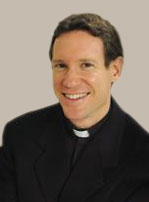 of Divine Mercy? What a joy to talk with Fr. Michael Gaitley, who serves as director of the Association of Marian Helpers, about “33 Days to Morning Glory: A Do-It-Yourself Retreat in Preparation for Marian Consecration”. He answers the above the questions above and so much more.
of Divine Mercy? What a joy to talk with Fr. Michael Gaitley, who serves as director of the Association of Marian Helpers, about “33 Days to Morning Glory: A Do-It-Yourself Retreat in Preparation for Marian Consecration”. He answers the above the questions above and so much more.
Podcast: Play in new window | Download (Duration: 34:01 — 31.1MB) | Embed
Subscribe: Apple Podcasts | Spotify | Amazon Music | Android | Pandora | iHeartRadio | JioSaavn | Podchaser | Gaana | Podcast Index | Email | TuneIn | Deezer | Anghami | RSS | More
The goal of the retreat contained in the book is to learn how to ponder more deeply in our hearts what it means to enter into Marian consecration. With the help of not only St. Louis de Montfort, but also St. Maximilian Kolbe, Bl. John Paul II, and Bl. Mother Teresa of Calcutta, Fr. Gaitley reveals to us the great connection between the heart of Mary and beautiful depth of Divine  Mercy…and the key to it all is…TRUST.
Mercy…and the key to it all is…TRUST.
Find the book here
To learn more about the “All Hearts A Fire” parish programs that Fr. Michael spoke of click here
IP#139 Paula Huston – Simplifying Your Soul on Inside the Pages
Podcast: Play in new window | Download (Duration: 27:41 — 44.3MB) | Embed
Subscribe: Apple Podcasts | Spotify | Amazon Music | Android | Pandora | iHeartRadio | JioSaavn | Podchaser | Gaana | Podcast Index | Email | TuneIn | Deezer | Anghami | RSS | More
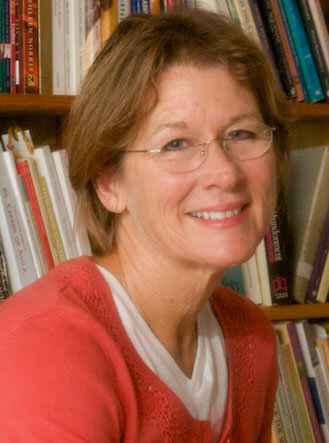
Here is the book for Lent (and any other time of the year for that matter), “Simplifying Your Soul: Lenten Practices to Renew Your Spirit” is “simply” wonderful! Paula Huston has such a gentle way of helping us to penetrate into what our hearts so we can draw closer to what we truly long for…a deeper relationship with God…the Father, the Son, and the Holy Spirit. A Benedictine oblate, Paula, draws from the best of the monastic traditions and helps us to apply those practices in our modern day circumstances. I have to believe that Sts. Benedict and Scholastic would be overjoyed how this 21-century daughter of the church has responded to their initial teachings offered so a long ago. NOT TO BE MISSED…HIGHLY RECOMMENDED!
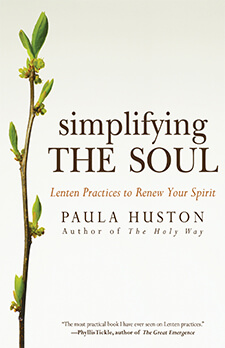 You can find it here
You can find it here
From the book description:
Our temptation in this era of self-fulfillment is to dismiss humility as a relic of the unsophisticated past. Yet for centuries, Christians have considered it a key component of a healthy spiritual life, and the journey toward humility to be one and the same as the journey toward Christlikeness.
The beauty of the Lenten season is that it encourages the development of a humble heart. Structured as an individual Lenten retreat, Simplifying the Soul presents daily readings from Jesus and the desert fathers and mothers, along with a meditation focused on a specific activity that can be carried out that day. Many of these activities come straight out of Catholic tradition, but others are adaptations of old wisdom woven into contemporary life (cleaning out a junk drawer, walking instead of driving, etc.) All are designed to lead to conversion of heart and a transformed life.
IP#132 Kevin Lowry – Faith at Work on Inside the Pages
Faith at Work: Finding Purpose Beyond the Paycheck is fantastic…a remedy for spirituality  seekers in the workplace (and in the home as well)! You have to love a work that begins with conversion as a goal. Kevin Lowry offers concrete helps which assist all of us deepen our relationship with Christ and His Church, and live authentic lives as Catholics in the world. Great for individuals and for group study as well.
seekers in the workplace (and in the home as well)! You have to love a work that begins with conversion as a goal. Kevin Lowry offers concrete helps which assist all of us deepen our relationship with Christ and His Church, and live authentic lives as Catholics in the world. Great for individuals and for group study as well.
Podcast: Play in new window | Download (Duration: 27:40 — 25.3MB) | Embed
Subscribe: Apple Podcasts | Spotify | Amazon Music | Android | Pandora | iHeartRadio | JioSaavn | Podchaser | Gaana | Podcast Index | Email | TuneIn | Deezer | Anghami | RSS | More
“Too many Christians treat ambition and success as if they’re four-letter words…. For a Catholic in business, they can be touchstones of sanctification.”— Scott Hahn, Ph.D., professor of biblical theology, Franciscan University of Steubenville
Be sure to visit Kevin Lowry’s website at Grateful Convert
Check it out here
Pope Benedict on Prayer 19 – The Prayer of Jesus at the Last Supper
VATICAN CITY, 11 JAN 2012 (VIS) 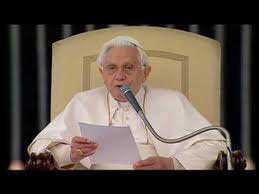
Jesus’ prayer during the Last Supper was the theme of Benedict XVI’s catechesis during his general audience, which was held this morning in the Paul VI Hall in the presence of 4,000 faithful.
The Pope explained how the emotional backdrop to the Last Supper, in which Jesus bade farewell to His friends, was the immanence of His approaching death. Moreover, in the days in which He was preparing to leave His disciples, the life of the Jewish people was marked by the approaching Passover, the commemoration of the liberation of Israel from Egypt.”It was in this context that the Last Supper took place”, the Holy Father said, “but with an important novelty”. Jesus “wanted the Supper with His disciples to be something special, different from other gatherings. It was His Supper, in which He gave something completely new: Himself. Thus Jesus celebrated the Passover as an anticipation of His Cross and Resurrection”.
The essence of the Last Supper lay in “the gestures of breaking and distributing the bread, and sharing the cup of wine, with the words that accompanied them and the context of prayer in which they took place. This was the institution of the Eucharist: the great prayer of Jesus and the Church”. The words the Evangelists use to describe that moment “recall the Jewish ‘berakha’; that is, the great prayer of thanksgiving and blessing which, in the tradition of Israel, is used to inaugurate important ceremonies. … That prayer of praise and thanks rises up to God and returns as a blessing. … The words of the institution of the Eucharist were pronounced in this context of prayer. The praise and thanksgiving of the ‘berakha’ became blessing and transformed the bread and wine into the Body and Blood of Jesus”.
Jesus’ gestures were the traditional gestures of hospitality which a host would extend to his guests, but in the Last Supper they acquired a more profound significance, Pope Benedict explained. Christ provided “a visible sign of welcome to the table upon which God gives Himself. In the bread and the wine, Jesus offered and communicated His own Self”. Aware of His approaching death, “He offered in advance the life that would shortly be taken from Him, thus transforming His violent death into a free act of the giving of Self, for others and to others. The violence He suffered became an active, free and redemptive sacrifice”.
“In contemplating Jesus’ words and gestures that night, we can clearly see that it was in His intimate and constant relationship with the Father that He accomplished the gesture of leaving to His followers, and to all of us, the Sacrament of love”, said the Pope. During the Last Supper Jesus also prayed for His disciples, who likewise had to suffer harsh trials. With that prayer “He supported them in their weakness, their difficulty in understanding that the way of God had to pass through the Paschal mystery of death and resurrection, which was anticipated in the offer of bread and wine. The Eucharist is the food of pilgrims, a source of strength also for those who are tired, weary and disoriented”.
Benedict XVI went on: “By participating in the Eucharist we have an extraordinary experience of the prayer which Jesus made, and continues to make for us all, that the evil we encounter in our lives may not triumph, and that the transforming power of Christ’s death and resurrection may act within each of us. In the Eucharist the Church responds to Jesus’ command to ‘do this in remembrance of me’, she repeats the prayer of thanksgiving and blessing and, therewith, the words of transubstantiation of the bread and wine into the Body and Blood of the Lord.
Our Eucharistic celebrations draw us into that moment of prayer, uniting us ever and anew to the prayer of Jesus”.
“Let us ask the Lord that, after due preparation also with the Sacrament of Penance, our participation in the Eucharist, which is indispensable for Christian life, may always remain the apex of all our prayers”, the Pope concluded. “Let us ask that, profoundly united in His offering to the Father, we too can transform our crosses into a free and responsible sacrifice of love, for God and for our fellows”.
At the end of his catechesis the Holy Father delivered greetings in a number of languages to the pilgrims present in the Paul VI Hall, inviting them to participate with
“faith and devotion” in the Eucharist which, he said, is indispensable for Christian life as well as being the school and culmination of prayer. Addressing young people, the sick and newlyweds, he pointed our that last Sunday’s Solemnity of the Baptism of the Lord is an occasion to reflect upon our own Baptism. “
Dear young people”, the Pope exclaimed, “live your membership of the Church, the family of Christ, joyfully. Dear sick people, may the grace of Baptism ease your sufferings and encourage you to offer them to Christ for the salvation of humanity. And you, dear newlyweds, … base your marriage on the faith which you received as a gift on the day of your Baptism”.
AG/ VIS 20120111 (880)
Pope Benedict on Prayer 18 – The Holy Family is the model for the School of Prayer
VATICAN CITY, 28 DEC 2011 (VIS) – Prayer in the Holy Family of Nazareth was the theme of Benedict XVI’s catechesis during today’s general audience, which was held in the Paul VI Hall in the presence of 7,000 pilgrims.
“The house of Nazareth”, the Pope explained, “is a school of prayer where we learn to listen, to meditate, to penetrate the deepest meaning of the manifestation of the Son of God, drawing our example from Mary, Joseph and Jesus”.
“Mary is the peerless model for the contemplation of Christ”, he said. She “lived with her eyes on Christ and treasured His every word. … Luke the Evangelist makes Mary’s heart known to us, her faith, her hope, her obedience, her interior life and prayer, her free adherence to Christ. All of these came from the gift of the Holy Spirit, which descended upon her just as it descended upon the Apostles according to Christ’s promise. This image of Mary makes her a model for all believers”.
Mary’s capacity to live by the gaze of God is “contagious”, the Holy Father went on. “The first to experience this was St. Joseph. … With 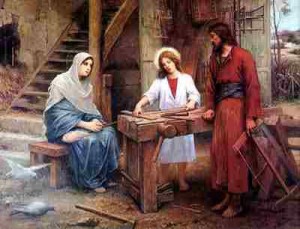 Mary, and later with Jesus, he began a new rapport with God, he began to accept Him into his life, to enter into His plan of salvation, to do His will”.
Mary, and later with Jesus, he began a new rapport with God, he began to accept Him into his life, to enter into His plan of salvation, to do His will”.
Although the Gospel has not preserved any of Joseph’s words, “his is a silent but faithful presence, constant and active. … Joseph fulfilled his paternal role in all aspects”. In this context, the Pope explained how Joseph had educated Jesus to pray, taking Him to the synagogue on Saturdays and guiding domestic prayer in the morning and evening. “Thus, in the rhythm of the days spent in Nazareth, between Joseph’s humble dwelling and his workshop, Jesus learned to alternate pray and work, also offering up to God the fatigue by which they earned the bread the family needed”.
Benedict XVI then turned his attention to the pilgrimage of Mary, Joseph and Jesus to the Temple in Jerusalem, as narrated in the Gospel of St. Luke. “The Jewish family, like the Christian family, prays in the intimacy of the home, but it also prays together in the community recognising itself as part of the pilgrim People of God”, he said.
Jesus’ first words – “Why were you searching for me? Did you not know that I must be in my Father’s house” – pronounced when Mary and Joseph found Him sitting among the teachers in the Temple, are a key to understanding Christian prayer. “From that moment, the life of the Holy Family became even richer in prayer, because the profound significance of the relationship with God the Father began to spread from the Heart of the boy (then adolescent, then young man) Jesus to the hearts of Mary and Joseph. The Family of Nazareth was the first model of the Church in which, in the presence of Jesus and thanks to His mediation, a filial rapport with God came to transform even interpersonal relations”.
“The Holy Family”, Benedict XVI concluded, “is an icon of the domestic Church, which is called to pray together. The family is the first school of prayer where, from their infancy, children learn to perceive God thanks to the teaching and example of their parents. An authentically Christian education cannot neglect the experience of prayer. If we do not learn to pray in the family, it will be difficult to fill this gap later. I would, then, like to invite people to rediscover the beauty of praying together as a family, following the school of the Holy Family of Nazareth”.
AG/VIS 20111228 (620)
“Rachel weeping for her children…” – Reflections of Msgr. John Esseff – Discerning Hearts
Podcast: Play in new window | Download (Duration: 31:18 — 50.2MB) | Embed
Subscribe: Apple Podcasts | Spotify | Amazon Music | Android | Pandora | iHeartRadio | JioSaavn | Podchaser | Gaana | Podcast Index | Email | TuneIn | Deezer | Anghami | RSS | More
Msgr. Esseff not only laments the horror of the massacre of the Holy Innocents in Bethlehem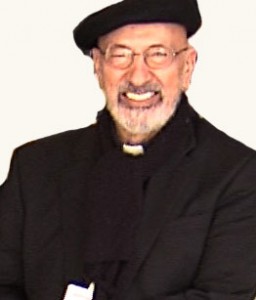 2000 years ago, but the tragedy of the continued holocaust of children within their mother’s womb that occurs
2000 years ago, but the tragedy of the continued holocaust of children within their mother’s womb that occurs 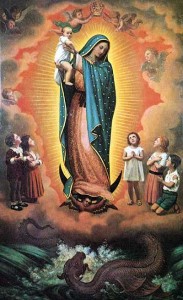 today. He reflects on the passage from Revelation which recounts the hatred the devil has for the womb of the woman: The enemy HATES life. Msgr. Esseff reminds us of the VICTORY of Christ and discusses the forgiveness and hope found with God. He shares the stories of two seperate women named Maria, both of whom touched his life and who can help show us the way.
today. He reflects on the passage from Revelation which recounts the hatred the devil has for the womb of the woman: The enemy HATES life. Msgr. Esseff reminds us of the VICTORY of Christ and discusses the forgiveness and hope found with God. He shares the stories of two seperate women named Maria, both of whom touched his life and who can help show us the way.
“God is Love” the legacy of St. John the Apostle – Reflections from Msgr. John Esseff – Discerning Hearts
Podcast: Play in new window | Download (Duration: 37:42 — 60.4MB) | Embed
Subscribe: Apple Podcasts | Spotify | Amazon Music | Android | Pandora | iHeartRadio | JioSaavn | Podchaser | Gaana | Podcast Index | Email | TuneIn | Deezer | Anghami | RSS | More
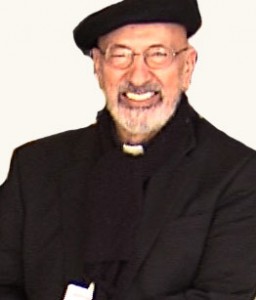 Msgr. Esseff, on his patronal feast day, discusses St. John the Evangelist. He recalls the message found in the Gospel of St. John, his letters, and stories from St. Polycarp. Msgr. Esseff discusses the relationship
Msgr. Esseff, on his patronal feast day, discusses St. John the Evangelist. He recalls the message found in the Gospel of St. John, his letters, and stories from St. Polycarp. Msgr. Esseff discusses the relationship 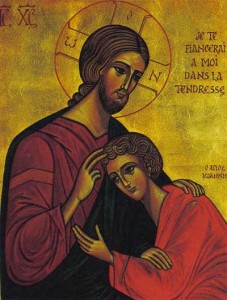 of Our Lady with John, and the gift Jesus made of her to John and to us all. He also shares how deeply the Sacred Heart is found in the teachings of St. John.
of Our Lady with John, and the gift Jesus made of her to John and to us all. He also shares how deeply the Sacred Heart is found in the teachings of St. John.
PS-6 Personal Plan for Holiness – the Communion of Saints
The importance of our family in faith, the Communion of Saints….Join Teresa Monag hen, of Pro Sanctity, as she offers a “Personal Plan for Holiness”. Listen along with these short, but beautiful meditations which encourage us tocontinue on our journey as “saints in the making”!
hen, of Pro Sanctity, as she offers a “Personal Plan for Holiness”. Listen along with these short, but beautiful meditations which encourage us tocontinue on our journey as “saints in the making”!
Podcast: Play in new window | Download (Duration: 2:42 — 3.1MB) | Embed
Subscribe: Apple Podcasts | Spotify | Amazon Music | Android | Pandora | iHeartRadio | JioSaavn | Podchaser | Gaana | Podcast Index | Email | TuneIn | Deezer | Anghami | RSS | More
Learn more about Pro Sanctity at www.prosanctity.org

